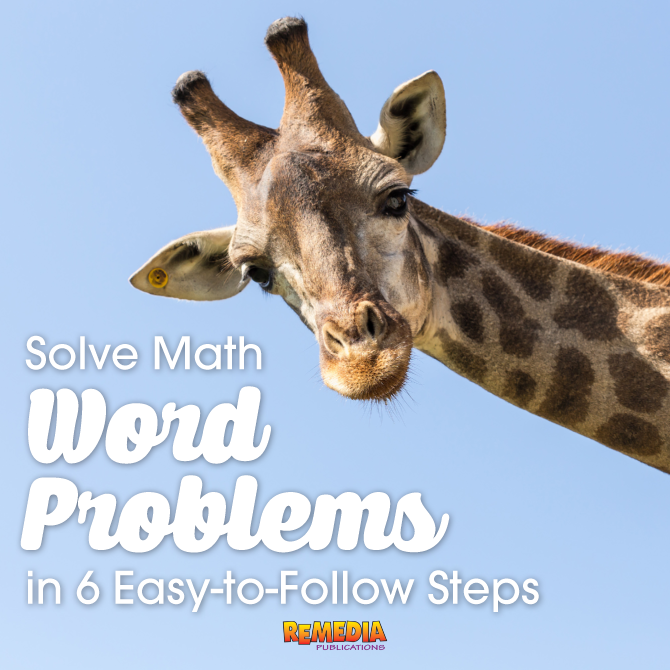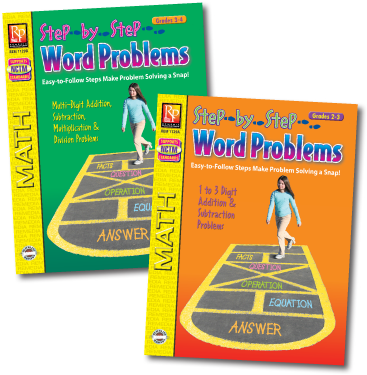Many students have difficulty mastering word problems. We have a solution that helps students break apart a word problem into six easy-to-follow steps. In following these steps, students will learn to focus on the information and sequence that is helpful to solving the problem.
Use this template <free download> to make following these steps even easier.
1. Underline the Facts
Students should carefully read the problem and then determine which facts give them the information they need to solve the problem.
2. Highlight the Question
Focusing on the question will give clues as to what operation should be used to solve the problem.
3. Circle the Operation
Focusing on this step allows students to use the information gathered in the first two steps to make their decision about the operation and then move on to the next step.
Students who struggle with word problems may specifically struggle with the words that indicate the operation. Work with students to recognize these words and what operation they indicate: in all (add), how many more (subtract), how many left (subtract), etc..
Tip: In addition to circling the operation, have students write the operation. This will help students make the connection between words like “how many more” and the operation
“subtract”.
4. Write the Equation
This important step is a result of determining the operation and then using the information from the facts. Writing the equation says: “I know how to do this problem.”
5. Solve the Problem
This is the computation part of the process. Students will solve for the answer.
6. Write Your Answer in a Sentence (Does it make sense?)
Writing the answer in a sentence helps reinforce the problem-solving process. Asking students to think about whether or not the answer “makes sense” helps them check the answer and see it in the context of the problem.
Following these steps will help students master one-step word problems so that when extra information appears in their word problems, they can differentiate the important versus the unimportant information.
Tip: Have students use different colored crayons or markers for two-step word problems. This will help each operation stand out. Plus students will love getting to use markers in math class!

















